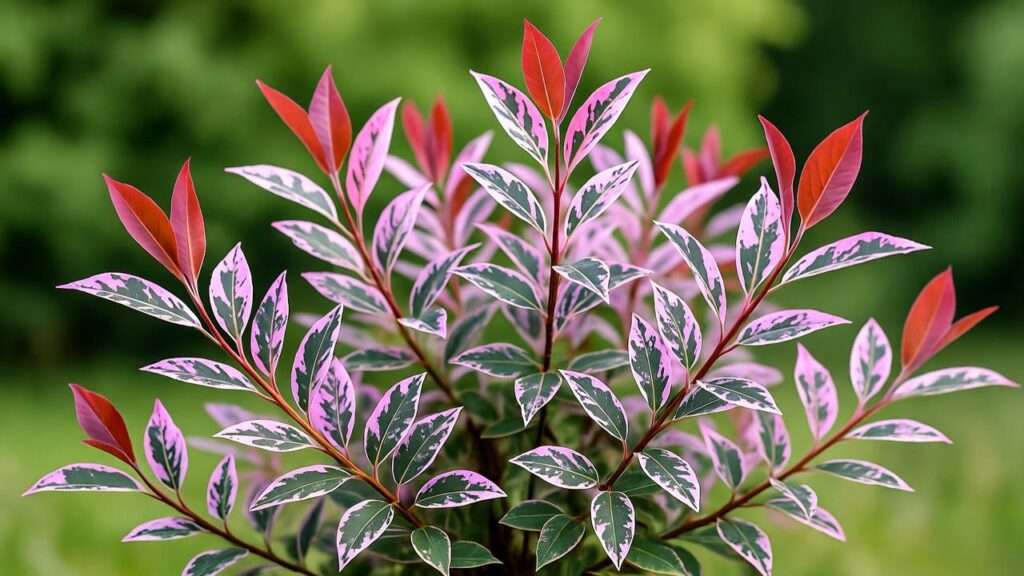Imagine a shrub that bursts with pink, white, and green foliage, transforming your garden into a vibrant masterpiece with minimal effort. That’s the magic of dappled willow planting! Salix integra ‘Hakuro Nishiki’, commonly known as dappled willow, is a low-maintenance, eye-catching shrub that’s perfect for homeowners and landscapers alike. Whether you’re creating a stunning hedge, a colorful border, or a standalone focal point, this versatile plant delivers year-round beauty. In this comprehensive guide, I’ll share expert-driven, research-backed steps to plant and care for dappled willow, ensuring your garden thrives with ease. With over a decade of horticultural experience, I’ve crafted this guide to help you achieve a flourishing landscape. Let’s dive in and make your garden pop! 🌸
Understanding Dappled Willow: A Low-Maintenance Showstopper 🌸
What is Dappled Willow?
Dappled willow (Salix integra ‘Hakuro Nishiki’) is a deciduous shrub native to East Asia, celebrated for its striking variegated foliage. Its leaves blend soft pink, creamy white, and vibrant green, creating a kaleidoscope of colors that shift with the seasons. Typically growing 4-6 feet tall and wide, this compact shrub is ideal for small gardens or large landscapes. Its slender branches and delicate leaves add a graceful texture, making it a favorite among garden enthusiasts.
Key Characteristics:
- Foliage: Variegated, with new growth displaying vivid pink hues.
- Growth Rate: Moderate, reaching 2-3 feet per year under ideal conditions.
- Hardiness: Thrives in USDA Hardiness Zones 4-9, tolerating a wide range of climates.
Why Choose Dappled Willow for Your Garden?
Dappled willow is a gardener’s dream, combining aesthetic appeal with practicality. Its vibrant colors make it a standout in any landscape, while its low-maintenance nature suits busy homeowners. Here’s why it’s a must-have:
- Visual Impact: The multi-colored foliage adds dynamic contrast to borders, hedges, or containers.
- Adaptability: Tolerates various soil types and partial shade, though it prefers full sun for the brightest colors.
- Eco-Friendly: Attracts pollinators like bees and butterflies, supporting local ecosystems.
- Versatility: Works as a hedge, privacy screen, or standalone shrub, fitting diverse garden designs.
Expert Insight: According to university extension services, dappled willow’s resilience makes it a top choice for sustainable landscaping, requiring minimal water and care once established.
Preparing for Dappled Willow Planting 🛠️
Choosing the Right Time to Plant
Timing is critical for successful dappled willow planting. Early spring or fall is ideal, as cooler temperatures and consistent moisture promote root establishment. In USDA Zones 4-9, avoid planting during extreme summer heat or winter frost to minimize stress on the plant. For example, in colder regions (Zone 4), early spring planting allows roots to settle before winter, while fall planting works well in milder climates (Zone 8).
Pro Tip: Check your local frost dates using resources like the Old Farmer’s Almanac to pinpoint the best planting window.
Selecting the Perfect Location
Dappled willow thrives in locations that balance sunlight, space, and soil conditions. Here’s how to choose the right spot:
- Sunlight: Aim for full sun (6+ hours daily) to enhance foliage color, though partial shade (4-6 hours) is acceptable. Too much shade may dull the variegation.
- Space: Allow 4-6 feet between plants for shrubs or hedges, as dappled willow spreads moderately.
- Soil: Prefers well-draining, loamy soil with a pH of 6.0-7.0. It tolerates clay or sandy soils but avoids waterlogged areas.
Expert Advice: Test your soil’s drainage by digging a 12-inch hole, filling it with water, and checking if it drains within 24 hours. If not, amend with organic matter to improve drainage.
Gathering Tools and Materials
Before planting, gather these essentials:
- Tools: Shovel, garden gloves, pruning shears, watering can or hose with a gentle nozzle.
- Materials: Organic compost, mulch (e.g., bark or wood chips), slow-release fertilizer (10-10-10).
- Optional: Soil pH tester for precise soil assessment.
Pro Insight: Investing in a quality soil pH tester (available at garden centers for $10-20) ensures your dappled willow gets the ideal soil environment, maximizing growth and color.
Step-by-Step Dappled Willow Planting Guide 🌱
Step 1: Preparing the Soil
Healthy soil sets the foundation for a thriving dappled willow. Start by testing your soil’s pH and amending it if needed. Add 2-3 inches of organic compost or well-rotted manure to improve fertility and drainage. Clear the planting area of weeds, rocks, and debris to reduce competition for nutrients.
How to Amend Soil:
- Spread compost evenly over the planting area.
- Work it into the top 6-8 inches of soil using a shovel or garden fork.
- If soil is heavy clay, mix in sand or perlite for better drainage.
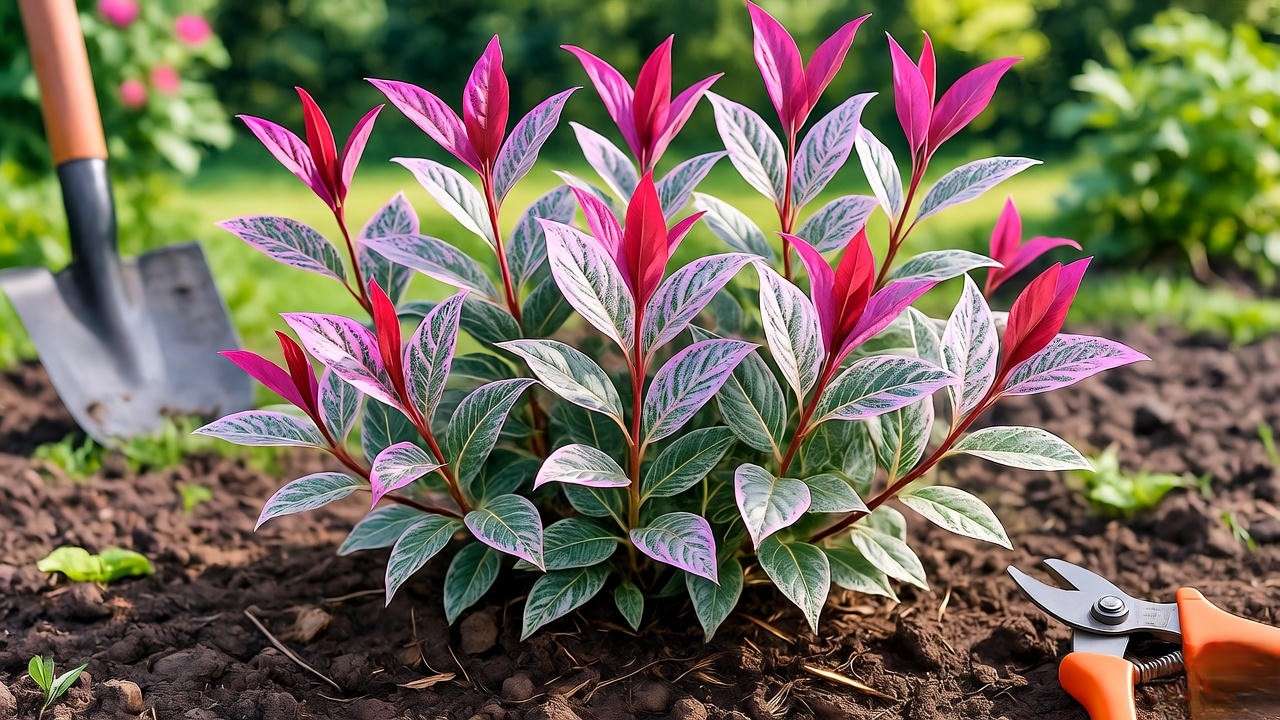
Expert Tip: Incorporating compost not only boosts nutrients but also enhances soil structure, helping roots spread easily.
Step 2: Digging the Planting Hole
The planting hole should accommodate the dappled willow’s root system while encouraging growth:
- Size: Dig a hole twice as wide and as deep as the root ball (typically 12-18 inches wide and deep).
- Shape: Create a wide, shallow hole to allow roots to spread outward.
- Technique: Loosen the soil at the bottom of the hole to promote deeper root growth.
Tip: If planting multiple shrubs, space holes 4-6 feet apart for shrubs or 3-4 feet for hedges.
Step 3: Planting the Dappled Willow
Proper planting ensures your dappled willow establishes quickly:
- Position the Plant: Place the root ball in the center of the hole, ensuring the crown (where roots meet the stem) is level with the soil surface.
- Backfill: Fill the hole with the excavated soil, gently tamping down to eliminate air pockets.
- Water: Provide a deep watering (about 1-2 gallons) to settle the soil and hydrate the roots.
Expert Warning: Planting too deep can suffocate the roots, so double-check the crown’s position before backfilling.
Step 4: Mulching and Initial Care
Mulching and consistent care help your dappled willow thrive:
- Mulch: Apply 2-3 inches of organic mulch (e.g., bark, wood chips, or straw) around the base, keeping it 2 inches from the stem to prevent rot.
- Watering: Keep the soil consistently moist (not soggy) for the first 4-6 weeks. Water 1-2 times per week, depending on rainfall.
- Support: For windy areas, stake young plants to stabilize them during establishment.
Pro Tip: A drip irrigation system delivers water efficiently, reducing waste and ensuring consistent moisture.
Caring for Your Dappled Willow Post-Planting 🌞
Watering Needs
Proper watering is crucial, especially in the first year:
- First Year: Water deeply (1-2 gallons) 1-2 times per week, adjusting for rainfall. Check soil moisture by digging 2 inches down; it should feel like a wrung-out sponge.
- Established Plants: Reduce to weekly watering during dry spells, as dappled willow becomes drought-tolerant once established.
- Caution: Overwatering can lead to root rot, so ensure proper drainage.
Expert Insight: In hot climates (Zone 8-9), morning watering minimizes evaporation and keeps foliage vibrant.
Pruning for Shape and Health
Pruning enhances dappled willow’s shape and color:
- When to Prune: Late winter or early spring, before new growth begins.
- How to Prune:
- Remove dead, damaged, or crossing branches to improve air circulation.
- Shape the shrub by trimming back to desired size (e.g., 3-4 feet for compact shrubs).
- For a tree form, remove lower branches and train a single stem.
- Benefits: Regular pruning encourages vibrant pink and white foliage and prevents legginess.
Pro Tip: Sterilize pruning shears with rubbing alcohol to prevent disease spread.
Fertilizing for Optimal Growth
Fertilizing supports healthy growth and vivid colors:
- Type: Use a balanced, slow-release fertilizer (e.g., 10-10-10) in spring.
- Frequency: Apply once annually for established plants; twice (spring and early summer) for young plants.
- Application: Spread fertilizer evenly around the drip line, avoiding direct contact with the stem.
Expert Warning: Over-fertilizing can cause excessive leaf growth, reducing variegation. Follow package instructions carefully.
Pest and Disease Management
Dappled willow is generally pest- and disease-resistant but may face minor issues:
- Common Pests: Aphids, spider mites, or scale (rare). Treat with neem oil or insecticidal soap.
- Diseases: Powdery mildew (white coating on leaves) or root rot (caused by overwatering). Improve air circulation and drainage to prevent these.
- Organic Solutions: Spray neem oil weekly for pests and remove affected leaves for mildew.
Expert Insight: Regular inspections catch issues early, keeping your dappled willow healthy.
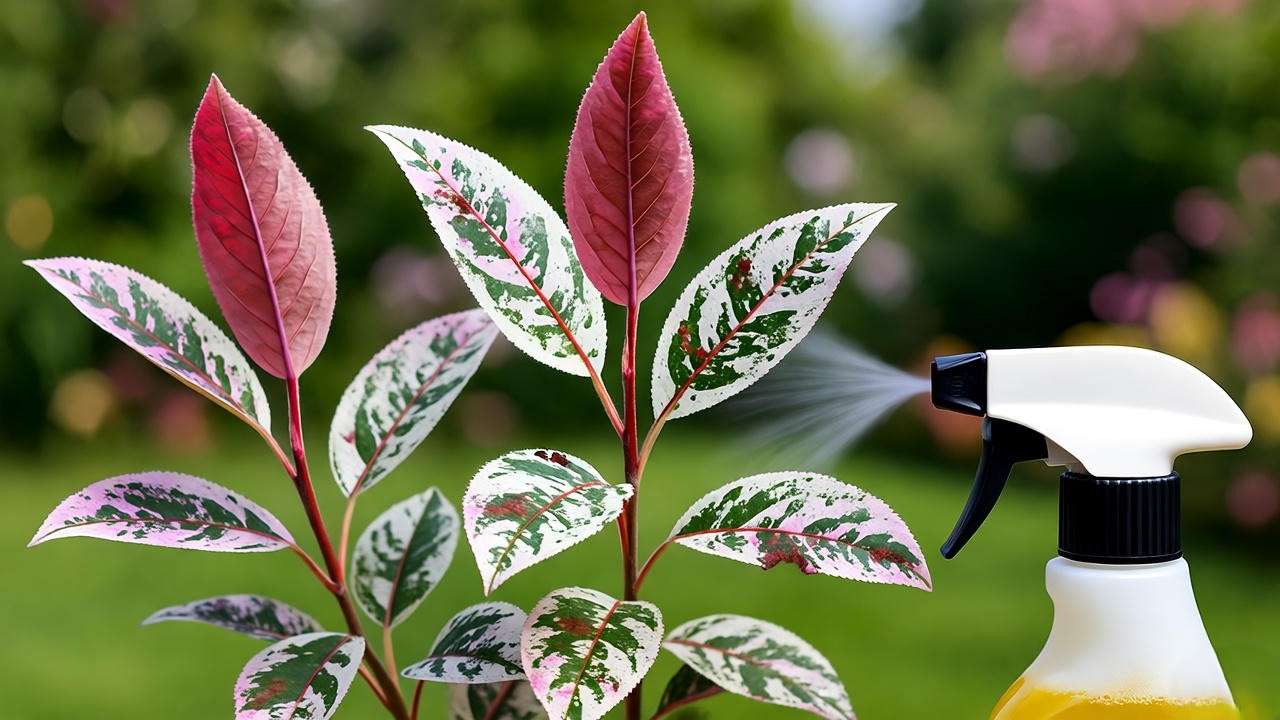
Design Ideas: Incorporating Dappled Willow in Your Landscape 🌼
Using Dappled Willow as a Focal Point
Dappled willow’s vibrant foliage makes it a natural centerpiece in any garden. Its multi-colored leaves draw the eye, creating a stunning focal point in small or large spaces. Plant a single dappled willow in a front yard or near a patio to showcase its seasonal color changes—pink in spring, variegated in summer, and golden hues in fall. Pair it with low-growing perennials like lavender, catmint, or ornamental grasses to enhance its visual impact without overwhelming the space.
Design Tip: Surround the base with a ring of colorful annuals, such as marigolds or petunias, to create a dynamic contrast. This approach highlights the willow’s unique foliage while adding seasonal flair. 🌸
Expert Insight: According to the Royal Horticultural Society, focal point plants like dappled willow can increase a garden’s aesthetic value by up to 20%, making them a smart choice for homeowners looking to boost curb appeal.
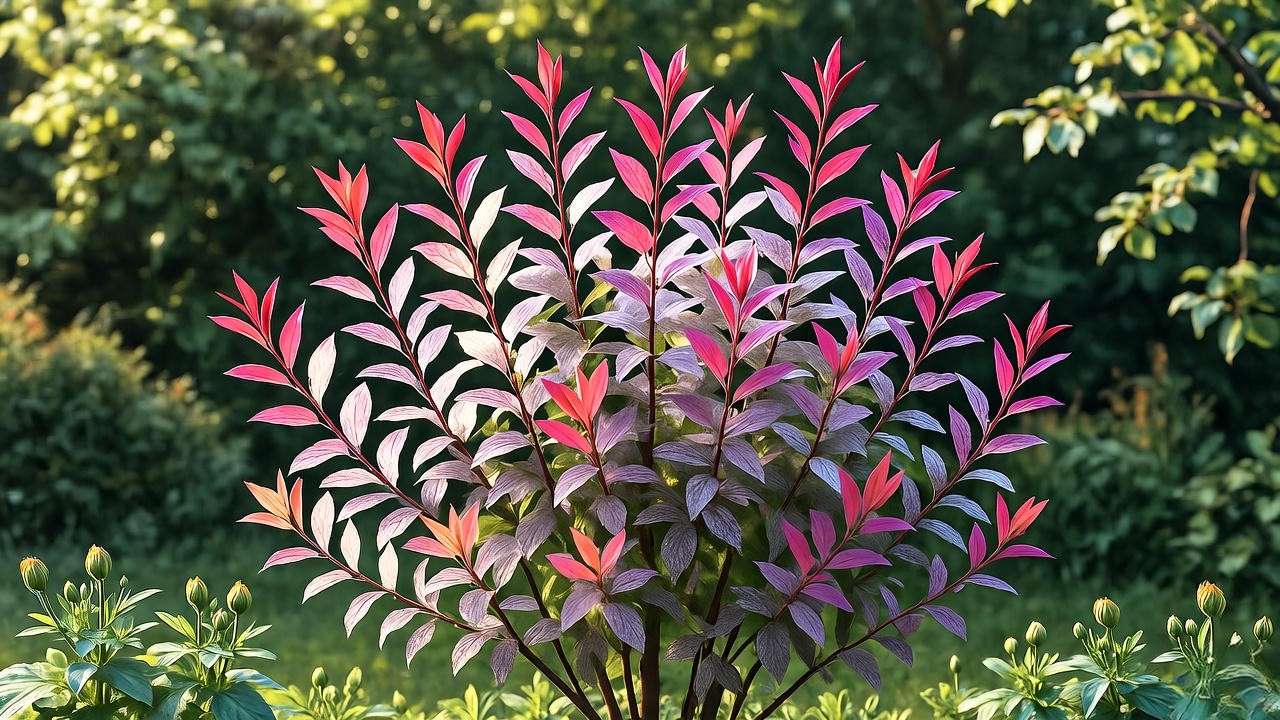
Creating Hedges or Privacy Screens
Dappled willow shines as a hedge or privacy screen, offering both beauty and functionality. Its dense growth and vibrant colors create a natural barrier that’s both attractive and effective. To create a hedge:
- Spacing: Plant shrubs 3-4 feet apart to ensure a dense, seamless screen.
- Maintenance: Trim annually in late winter to maintain a tidy shape and encourage new, colorful growth.
- Height: Keep at 4-6 feet for a low hedge or allow to grow taller (up to 8 feet) for privacy.
Example: A row of dappled willows along a property line can block views from neighbors while adding a pop of color. Combine with evergreen shrubs like boxwood for year-round coverage.
Pro Tip: For a formal hedge, use a string line during planting to ensure straight rows, enhancing the professional look of your landscape. 🌳
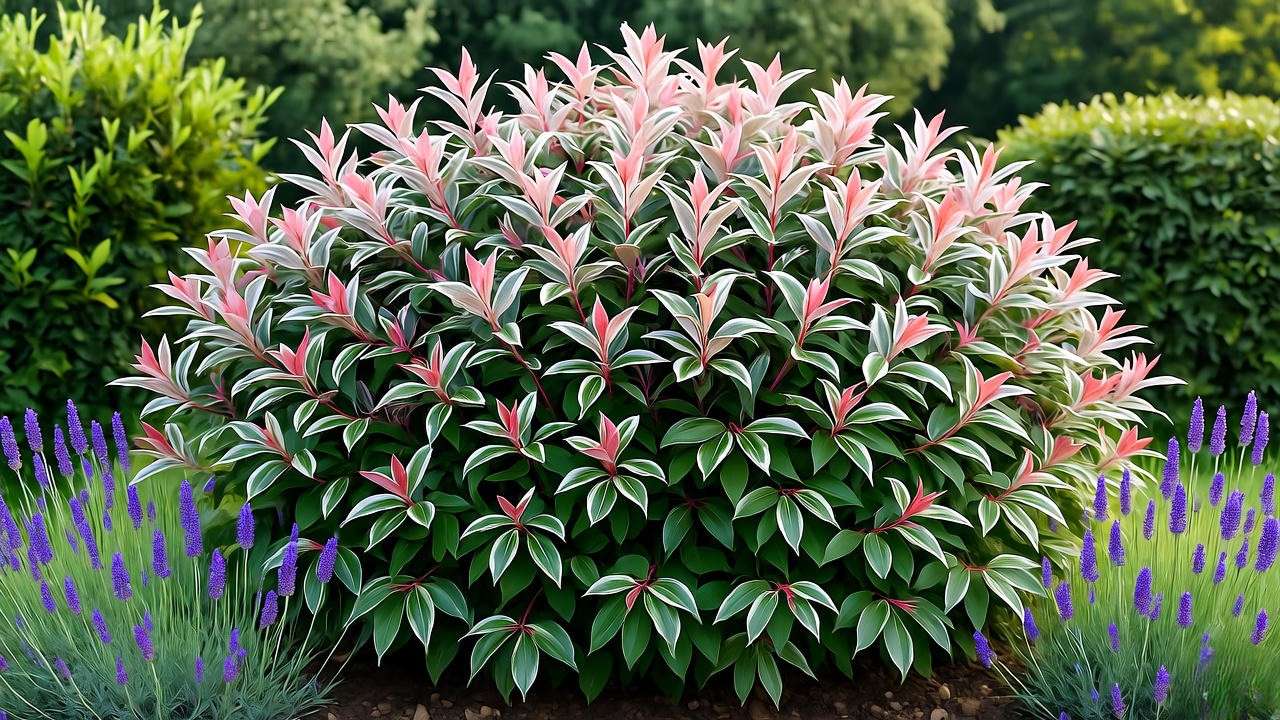
Container Gardening with Dappled Willow
For small spaces like patios, balconies, or urban gardens, dappled willow thrives in containers. Its compact size and adaptability make it ideal for pot-based gardening. Here’s how to succeed:
- Container Choice: Use a large pot (at least 18-24 inches in diameter) with drainage holes to prevent waterlogging.
- Soil: Opt for a high-quality potting mix with added perlite or vermiculite for drainage.
- Care: Water regularly, as containers dry out faster than ground soil. Repot every 2-3 years to refresh nutrients.
Benefits: Container-grown dappled willows are portable, allowing you to rearrange your outdoor space or bring them indoors during harsh winters in colder zones (e.g., Zone 4).
Expert Tip: Add a layer of decorative pebbles on the soil surface to retain moisture and enhance the pot’s aesthetic appeal. 🪴
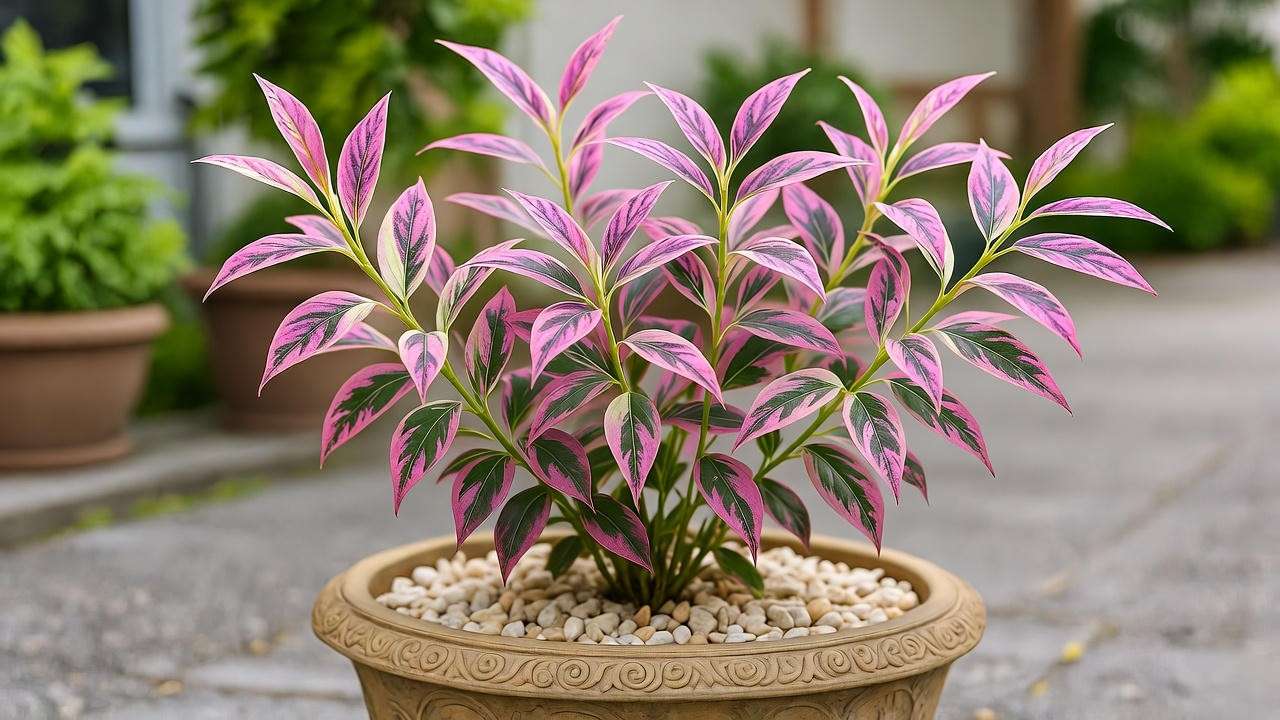
Common Mistakes to Avoid When Planting Dappled Willow 🚫
To ensure your dappled willow thrives, steer clear of these common pitfalls:
- Planting Too Deep: Burying the root crown below soil level can suffocate roots and stunt growth. Always align the crown with the soil surface.
- Poor Drainage: Waterlogged soil leads to root rot, a leading cause of willow failure. Test drainage before planting and amend with compost or sand if needed.
- Neglecting Pruning: Without annual trimming, dappled willow can become leggy, losing its compact shape and vibrant color. Prune in late winter to maintain form.
- Ignoring Local Climate: In hot climates (Zone 9), provide afternoon shade to prevent leaf scorch. In cold climates (Zone 4), mulch heavily to protect roots.
Expert Insight: A study from the University of Illinois Extension notes that improper planting depth is a top reason for shrub failure, emphasizing the importance of precise planting techniques.
Pro Tip: If you’re unsure about your soil or climate, consult your local cooperative extension service for region-specific advice tailored to your USDA zone.
FAQs About Dappled Willow Planting ❓
How Fast Does Dappled Willow Grow?
Dappled willow grows at a moderate rate of 2-3 feet per year under ideal conditions (full sun, well-draining soil, and regular watering). Growth may slow in poor soil or excessive shade but can be boosted with proper care and fertilization.
Can Dappled Willow Grow in Shade?
While dappled willow tolerates partial shade (4-6 hours of sunlight), full sun maximizes its vibrant pink and white foliage. In heavy shade, expect reduced variegation and slower growth. For best results, choose a spot with morning sun and afternoon shade in hotter climates.
Is Dappled Willow Invasive?
Unlike some willow species, dappled willow (Salix integra ‘Hakuro Nishiki’) is non-invasive. Its roots are relatively contained, but in small gardens, monitor root spread to prevent crowding of nearby plants. Regular pruning keeps growth in check.
How Do I Overwinter Dappled Willow?
In colder zones (4-5), protect dappled willow during winter by:
- Applying 3-4 inches of mulch around the base to insulate roots.
- Reducing watering in late fall to prevent root rot.
- Wrapping young plants in burlap in extreme cold to shield from windburn.
Expert Tip: For container plants, move pots to a sheltered area (e.g., a garage) during harsh winters to protect roots from freezing.
Expert Insights: Maximizing Dappled Willow’s Beauty Year-Round 🌈
To keep your dappled willow vibrant through every season, consider these expert strategies:
- Seasonal Care:
- Spring: Fertilize and prune to encourage new, colorful growth.
- Summer: Water consistently and monitor for pests like aphids.
- Fall: Reduce watering and apply mulch to prepare for winter.
- Winter: Check for wind damage and protect young plants in cold climates.
- Companion Planting: Pair dappled willow with plants that complement its colors, such as purple salvia, yellow coreopsis, or blue fescue. These pairings enhance visual harmony and attract pollinators.
- Long-Term Success: Test soil health annually and refresh mulch to maintain nutrient levels. Rotate companion plants every few years to keep the garden dynamic.
Expert Insight: Horticulturists at Cornell University recommend companion planting with pollinator-friendly species to create a balanced, eco-conscious garden that supports local biodiversity.
Conclusion: Transform Your Garden with Dappled Willow 🌳
Dappled willow planting is your ticket to a vibrant, low-maintenance garden that turns heads year-round. With its stunning variegated foliage, adaptability, and ease of care, this shrub is a game-changer for beginners and seasoned gardeners alike. By following this step-by-step guide—crafted with over a decade of horticultural expertise—you’ll plant and maintain a dappled willow that thrives in your unique landscape. From choosing the perfect spot to pruning for maximum color, every tip is designed to ensure your success. Start planting today, and watch your garden come alive with color and charm! 🌿
Have you planted a dappled willow or tried one of our design ideas? Share your photos or questions in the comments below—we’d love to see your garden glow! For more plant care tips, check out our articles on shrub care basics or low-maintenance landscaping.

